If you are looking for easy-care plants that can handle a bit of neglect, then look no further than growing succulents indoors!
Succulents are characterized by their thick, fleshy leaves and stems. These fuller parts help to hold and retain moisture, which allows them to live in locations that are dry and arid.
Desserts often come to mind when thinking about succulents’ natural habitats. However, they can also grow in the rocky soils of alpine climates. There are so many different varieties and types that are able to handle all sorts of growing conditions.
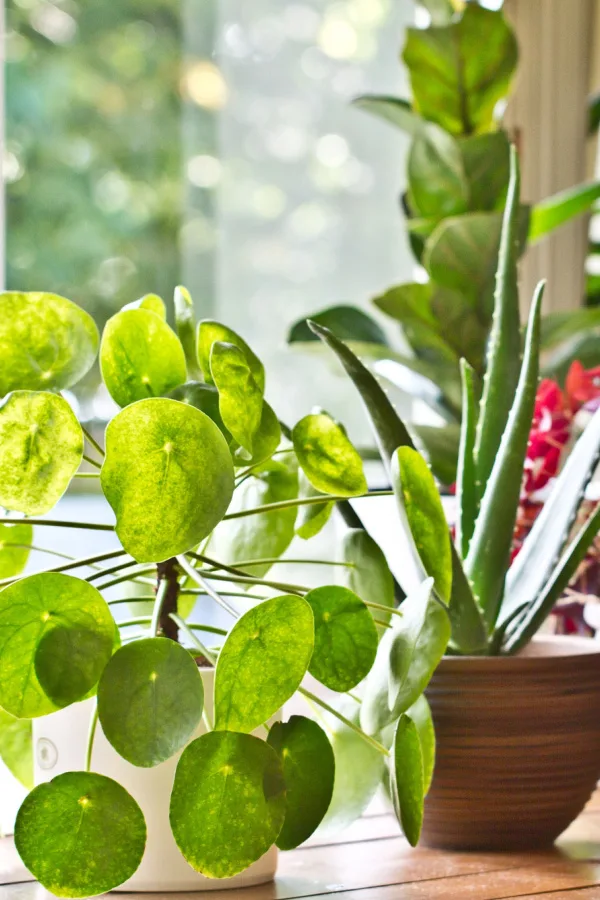
Aside from these arid locations, succulents can also live and thrive indoors. They just need the right conditions and very minimal attention to keep them happy.
So if you are someone who prefers easy-care plants or tends to forget the occasional watering, then succulents will be right up your alley! They are perfect for seasoned houseplant owners and beginners alike as long as you follow a few tips.
3 Key Factors For Happy, Healthy Succulents
When it comes to growing cacti or succulents like Aloe Vera, there are a few “rules” to follow. They aren’t high-maintenance plants and shouldn’t give you a lot of trouble once you keep these three tips in mind.
Sunlight
When growing succulents indoors, one of the most important factors is sunlight. Most succulents are used to growing in direct sunlight but do best with indirect sunlight during the day indoors.
Keep your succulents in a sunny window or under a grow light. A west or south-facing window will provide your succulents with plenty of indirect sunlight throughout the day. Don’t forget to rotate your plants every week so the plants can grow evenly.
If your succulents are starting to look tall and leggy, chances are they aren’t getting enough sunlight. Consider moving it to a sunnier window or purchase a simple grow light or LED light to supply it with a bit of artificial sunlight.
Water
In order to have healthy succulents, you need to copy the environment that they naturally grow in. While sunlight is a big key, so is proper watering. Succulents suffer more often from overwatering than they do underwatering.
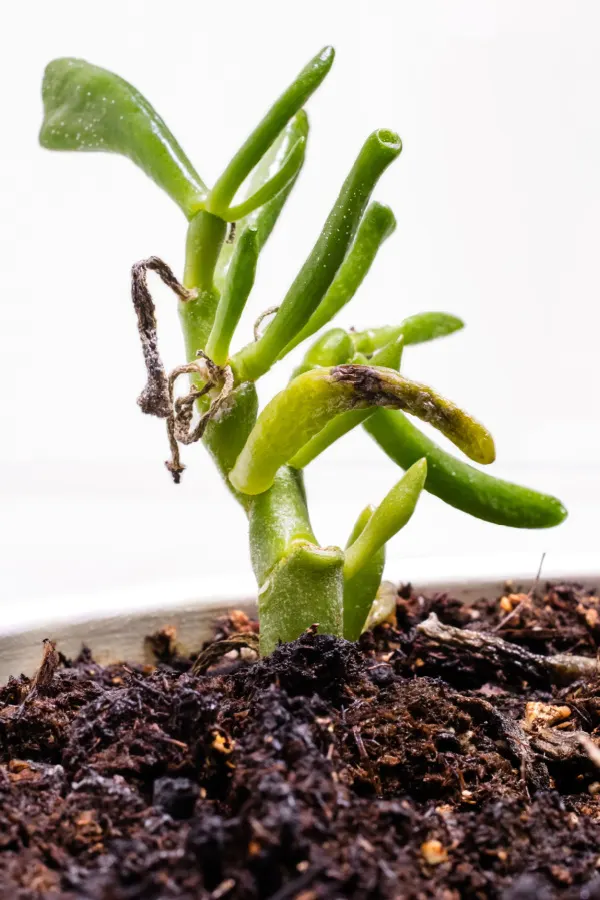
For best results, do not water your succulents too often. They will actually do better if they are only watered once every two weeks during the growing season. This timeframe will depend a little bit on the plant’s container size as well as where the plant is located within your home (e.g., more sunlight equals more evaporation and quicker drying soil).
Also, make sure that the container that you have the succulent in has sufficient drainage. If the container doesn’t have a hole already, you can add one in for most containers.
When it is time for watering, pour enough room-temperature water onto the soil until the excess water starts to drain out of the holes. Using collected rainwater is a great way to water houseplants without worrying about the chemicals that can be included in tap water.
Avoid putting the water directly on the plant’s leaves if you can help it. Be sure to remove any excess water that has collected in the drainage tray after about 30 minutes have passed.
Soil
Unlike traditional houseplants, succulents need a light soil mixture that drains well and doesn’t retain a lot of moisture. This keeps the plants from sitting in moist water, which is something succulents do not like.
There are commercial succulent and cacti soil mixtures available that work perfectly for these arid-loving plants. You can also create your own by mixing in lots of perlite or coarse sand into regular potting soil.
Winter Care
In many locations, with wintertime comes colder temperatures outside. However, the care for growing indoor succulents is relatively the same as it would be during the summer months.
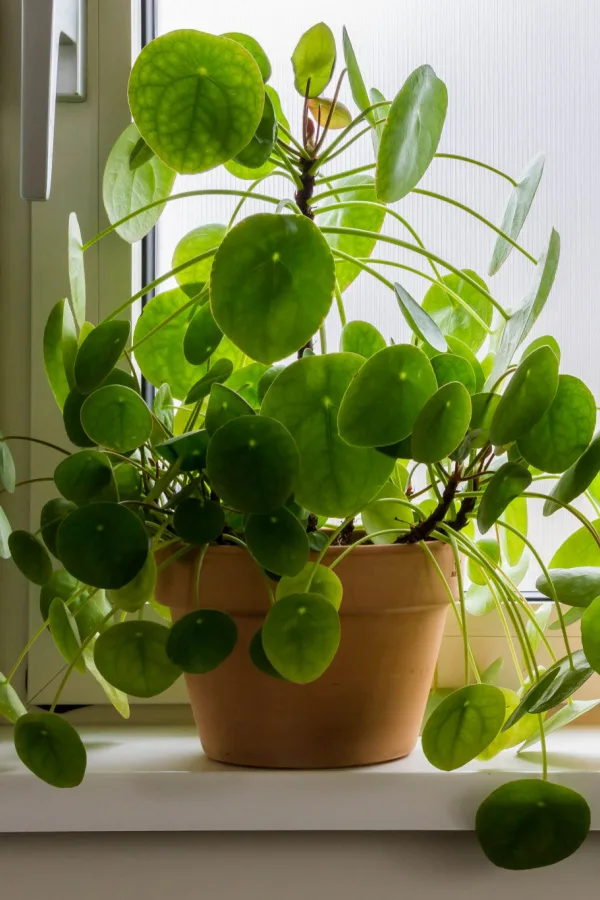
With colder days usually comes shorter days and a lack of sufficient sunlight. You might have to start using a grow light if your succulents are struggling to get enough natural sunlight during the winter months.
Also, keep in mind that you might need to slow down even more on watering if there is less sunlight. Change to watering about once a month as opposed to every two weeks during the winter months.
Now that you know the basics of caring for succulents, let’s check out three excellent varieties that would make a great start to your indoor growing collection!
3 Unique Succulents For Growing Indoors
Not all succulent varieties are the best choice for growing indoors. There are some varieties that prefer a bit of shade or low light. These varieties will have the best chance of thriving in indoor locations if you don’t have proper sunlight available.
Below are three great options that are unique, beautiful, and perfect for growing and surviving indoors. If you are instead looking for a great leaf succulent that can thrive outdoors in Zones 3-10, then check out Growing Sedum.
Haworthia Cooperi – Growing Succulents Indoors
Haworthia Cooperi, also known as Window Haworthia, Cooper’s Haworthia, Cushion Aloe, Pearl Plant, or Zebra Cactus is a stunning succulent that fairs well when grown indoors.
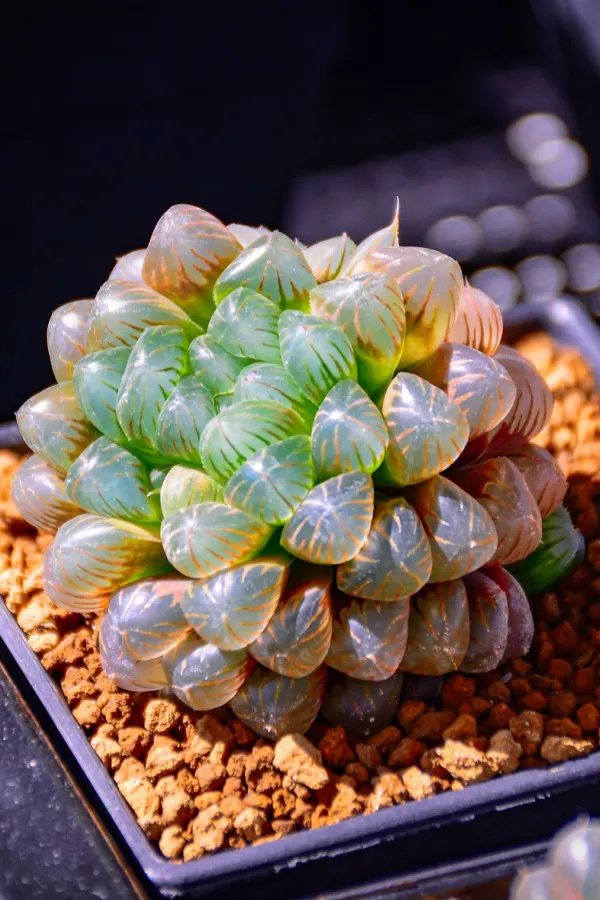
It features small rosettes that are composed of several thick, rounded leaves. The tips of the light green leaves are almost transparent with darker lines running from them.
Most rosettes grow up to around 2 to 3 inches wide and feature short stems that hardly reach above the soil line. Each leaf is usually less than two inches long and can be up to half an inch wide.
Any flowers produced from Haworthia Cooperi are white to light pink and feature veins of brown or green. While they can grow on stems that can reach over a foot tall, the blooms are pretty underwhelming. Blooming occurs in the spring and summer months.
Specific Care for Haworthia Cooperi
While Haworthia Cooperi can handle outside temperatures as low as 30 to 50º Fahrenheit (-1 to 10º Celsius), it prefers warmth. Your usual indoor temperatures should be sufficient.
As with most succulents, place Haworthia Cooperi in a bright, sunny location. However, they do not like full direct sun.
If you start to notice that the leaves are turning yellow or white-tinged, then your plant might be receiving too much light. If the leaves start to shrivel or fade, then they are receiving too little light.
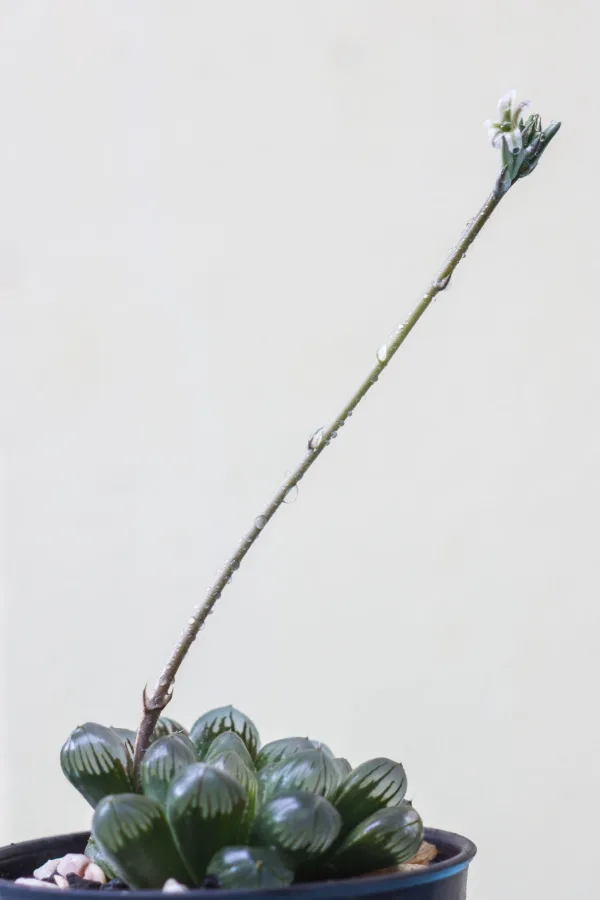
Aim for giving the succulent morning sun and a break from the harsh afternoon sun when possible. A window that faces East or West would be another great option for Haworthia Cooperi.
Haworthia Cooperi is a very slow-growing succulent and shouldn’t need repotting often, if ever. However, it wouldn’t be a bad idea to repot with new, fresh potting soil every couple of years. This will also help to avoid pests and other issues that might live in potting soils.
Gollum Jade – Growing Succulents Indoors
Crassula Ovata ‘Gollum’ Jade is thought to have gotten its name from the popular character from JRR Tolkien’s books. In the book, the character has a twisted, disfigured appearance. The Gollum succulent is described as the “disfigured” succulent of its close relative, the Jade plant – Hence the name. You might also hear Gollum Jade be called Shrek’s Ears, Ogre’s Ears, or Finger Plants.
Gollum Jade features long tubular finger-like green leaves that have what look like little reddish circles on the ends. If it flowers in the late fall and early winter, the blooms are white to light pink in color and resemble a star.
It can grow up to around 3 feet tall and about 2 feet wide. The stem becomes thicker and more twisted as it grows, so you may need to repot to larger containers. You can use Gollum Jade for bonsai training and it is simple to propagate.
Specific Care For Gollum Jade
Gollum Jade needs around 4 to 6 hours of direct sunlight per day, preferably morning sunlight since those rays aren’t as intense. A South or East facing window works well for this.
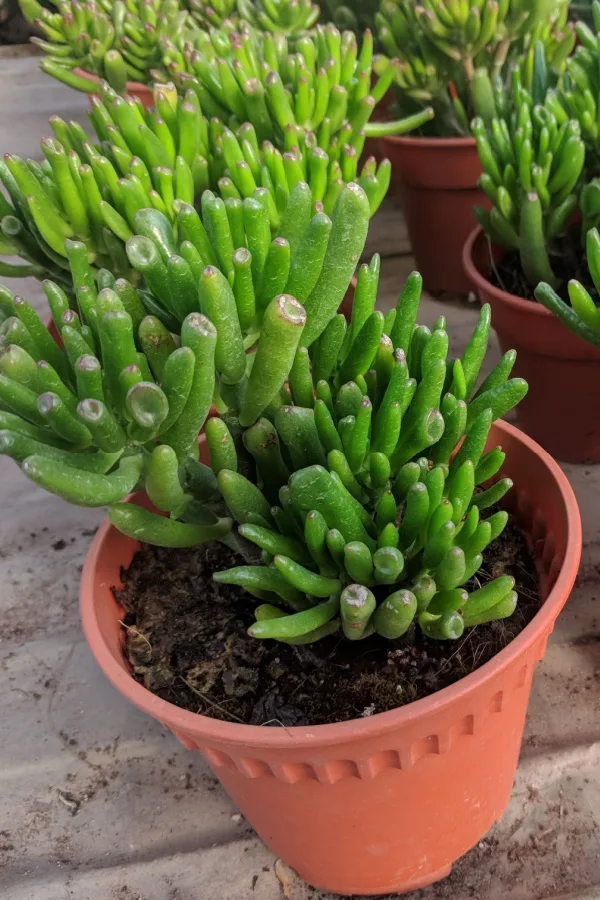
Check for legginess which would indicate that your Gollum Jade is not receiving enough light. The leaves will also turn a darker green color when in shady locations for too long.
While Gollum Jade is hardy down to 20 to 40º Fahrenheit (-7 to 4º Celcius), it does very well grown indoors. USDA Growing Zones 9 through 10 can get by with keeping Gollum Jade outdoors all year long, but most at least bring them indoors during the winter months.
Pancake Plant – Growing Succulents Indoors
The Pancake Plant, or Pilea peperomioides, is also known as Coin Plant, UFO Plant, Chinese Money Plant, and Friendship Plant. It is known as a plant that is often gifted between friends from all over the world.
The Pancake Plant is a popular indoor succulent variety that adds unique visual interest and appeal. It has a main woody stem with several long thin green stems fanning out from it. Each thin stem features a large, flat disk-shaped green leaf at the end.
They produce tiny light pink to white flowers in the springtime. While the plant prefers average indoor temperatures and humidities, exposing it to small periods of cooler temperatures in the winter months may help bring forth blooming in the spring.
Specific Care For Pancake Plant
Pancake plants are typically fast-growing and can grow to be around a foot tall. Keep them in a location that doesn’t drop below 50º Fahrenheit (10º Celsius) and avoid locations with drafts or heating vents.
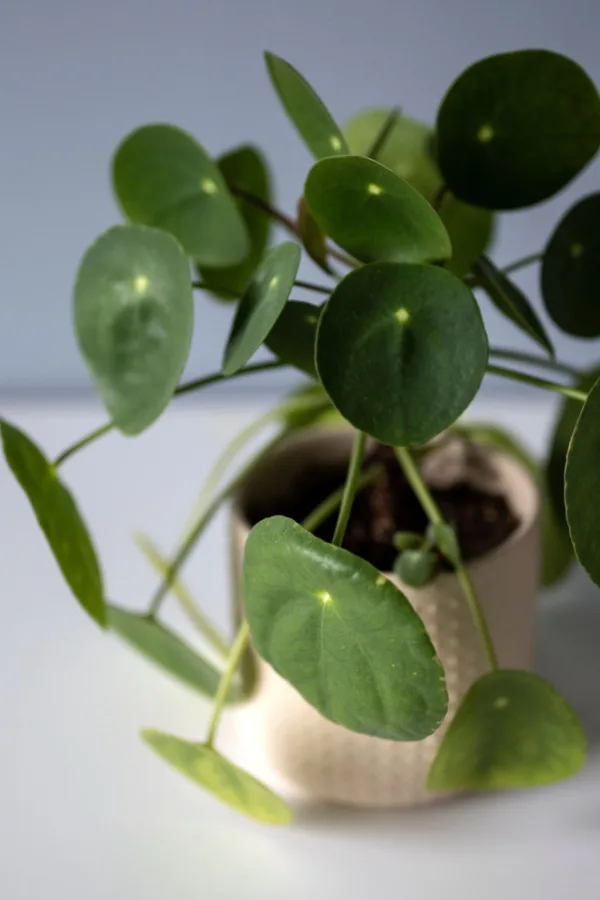
Pancake plants can sometimes get top-heavy with too much growth. If this occurs, you can simply cut off the top few inches of the stem and propagate to create a brand-new plant. You can remove the offshoots when they are a few inches tall to create new plants as well.
Be sure to trim off any dying foliage to allow the plant to focus on creating new growth. If any of the foliage starts to droop, then you are likely overwatering your plant. Make sure you are allowing the soil to dry out between waterings and decrease the frequency in the winter months.
To Conclude – Growing Succulents Indoors
Any one of these 3 unique succulent varieties would make a stunning addition to your indoor plant display. With a little bit of watering and a lot of indirect sunlight, your succulents will reward you with years of growth and beauty!
Follow Our Facebook Page For Even More Great Tips! Simple Garden Life Facebook Page
Simple Garden Life is a website dedicated to keeping gardening fun, simple and enjoyable! We publish two new articles each week along with a new garden podcast episode every two weeks. This article may contain affiliate links.
